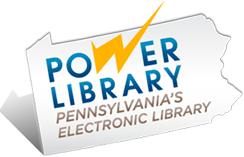
When conducting scholarly research, it’s important that you’re able to trust the materials you’re referencing. In the age of information, it’s becoming increasingly difficult to determine a source’s credibility — especially if it’s found online.
However, by understanding the defining characteristics of scholarly materials, you can learn how to find credible sources online for your next research project.
What Makes a Source “Scholarly?”
By definition, scholarly sources are materials written by experts for consumption by scholars and other experts. They provide theories, analyses, insights, or interpretations of new research findings within specific academic, medical, or scientific disciplines.
Because they are written by industry professionals, scholarly sources are reliable. They offer credibility and authority to your research because they are based on fact, not conjecture. Often, they are vetted by other professionals and published in academic journals.
If you’re unsure if the sources you are using are reliable, there are some characteristics that you can look for that all scholarly materials will have in common.
Characteristics of Scholarly Materials
There are some basic qualifications that can help you indicate if your source is scholarly. If your article has all of these characteristics, it can be trusted to use in your research.
Authors
The author will always be identified in a scholarly source – and usually, you’ll find they’re an authority or expert in their field with academic credentials like Ph.D. or M.D. If they don’t have credentials or you’re still unsure, do a quick internet search. If it’s written by a professor or researcher, the source is likely scholarly.
Language/Content
Scholarly sources are always written to inform, never to persuade or entertain — even if they’re sharing new ideas. This means they are strictly objective and free of bias.
The anatomy of scholarly materials– is familiar, often resulting in lengthier pieces. If the article you found follows that structure, it is probably scholarly.
Since they’re written for consumption by other experts, scholarly sources include advanced language and technical terms. There are no pictures or advertisements; the only visuals you will find are graphs or tables of statistical data.
References
A scholarly article will always list its references. Often, they’re cited throughout the text or in footnotes at the bottom of the page. At the very least, they will be clearly presented in a bibliography at the end of the paper.
Most scholarly materials are peer-reviewed by other experts. If your source is peer-reviewed, it will be clearly labeled as such in the journal description or masthead. You may also see the term “refereed,” which means the same thing.
If you are unable to identify all of these qualities when checking your source, it may not be scholarly and therefore, should not be used in your research.
The good news: all of these characteristics can be found simply by observing the article and its abstract. Save yourself time and energy by looking for them before reading the text in its entirety to ensure the source is credible.

Types of Scholarly Sources
Scholarly sources can come in many forms: journals, books, encyclopedias, etc. The most appropriate, however, are peer-reviewed journals-. According to PhoenixBlog-, publications that are peer-reviewed are the “gold standard” of scholarly sources.
Peer reviewing is used to assess the validity and quality of an article. It gives other experts in the discipline an opportunity to review the methodology and confirm that the information presented is original and substantiated before publishing.
When an article is labeled as “peer-reviewed” or “refereed,” you can be sure it’s gone through at least one (potentially more) rounds of proofing and fact-checking. This boosts the source’s credibility, making it one of the best scholarly sources to reference in your research.
In some cases, books can also be referenced as scholarly materials. If you decide to use a book, make sure it’s an academic book– written with the intent of discussing theories and academic information. Books written for general interest will not qualify as a scholarly source.
You can determine if your book is “academic” in nature by evaluating its content. If it has an index of key terms, includes in-text citations, and uses industry vocabulary, the book can likely be considered academic.
Also be on the lookout for any bias or opinions. Remember, scholarly sources should be objective.
Sources to Avoid
If you’re conducting scholarly research, you should avoid magazines, blogs, forums, and other websites-. Though these resources could be considered credible, they are not scholarly; they aren’t peer-reviewed and often share industry trends or opinions as opposed to advanced research.
*As with any rule, there are some exceptions, but a good rule of thumb is to opt for peer-reviewed journals.

How To Find Credible Sources Online
The process of finding a credible source online can seem intimidating, but it doesn’t have to be! Your library database is a good place to start. If you’re a high school or college student, your institution likely has a subscription to scholarly journals that you can access through your online library.
If you’re not a university student, but would like to read up on some professional research, your state’s public library system may provide access to academic journals and other online research databases.
Using your library’s databases, you can conduct specialized searches that yield scholarly materials. All you need is a card from your public library or an eCard from POWER Library and you can access thousands of titles anywhere at any time!
Below are some of the best resources offered by Pennsylvania’s POWER Library that are available to patrons state-wide.
Academic OneFile
Gale’s Academic OneFile is a source geared toward college and high-school students. It houses more than 18,000 peer-reviewed journals. Its main areas of interest are physical and social sciences, technology, medicine, engineering, and humanities.
When using Academic OneFile to search, you can look for a topic or browse for one by discipline. From there, you can filter your results by the document type. There’s even a box you can select that will reduce the list to peer-reviewed journals only.
Academic Search Main Edition
Designed for college-level students and other academic institutions, Academic Search Main Edition is a subset of the information service, EBSCO. They offer full-text, peer-reviewed journals on topics like physical, social, and medical sciences, religion and theology, and more.
Just like Academic OneFile, Academic Search Main Edition allows users to refine their results by organizing by source types, publications, and narrowed subjects. You can even limit your results to include strictly full-text or peer-reviewed articles.
Why Should I Use Scholarly Sources?
The use of scholarly materials is expected in your academic coursework. If you want to improve the quality of your papers, you must know how to recognize the elements that make up a scholarly article.
Remember, identifying scholarly materials is a skill, meaning it’s developed over time. After some practice and using the right resources, you’ll be able to determine scholarly from popular articles, increasing the overall validity and authority of your work!
